California braces THREE more storms after battering from bomb cyclone
>
California is bracing for three more storms after the state was hit by a weather bomb cyclone, as Los Angeles and San Francisco could receive inches of torrential rain in more flash flooding.
There are currently 461,960 people without power as California reels from the aftermath of the torrent. But the pause is expected to be brief, with storms in the Pacific lined up to wreak more havoc.
Trees have been felled, streets are inundated, and shorelines have been ambushed as the devastating weather front continues its relentless deluge in California.
The National Weather Service said: ‘A very active weather pattern in the Pacific Ocean will continue to drive brisk and fast-moving low pressure systems toward the West Coast.
“California continues to bear the brunt of the heavy precipitation and high winds associated with these systems as we approach the first full weekend of 2023.”
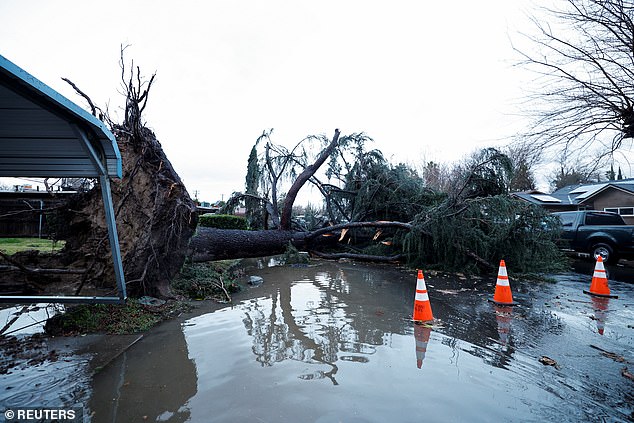
Trees have been uprooted during torrential California weather, but more are on the way
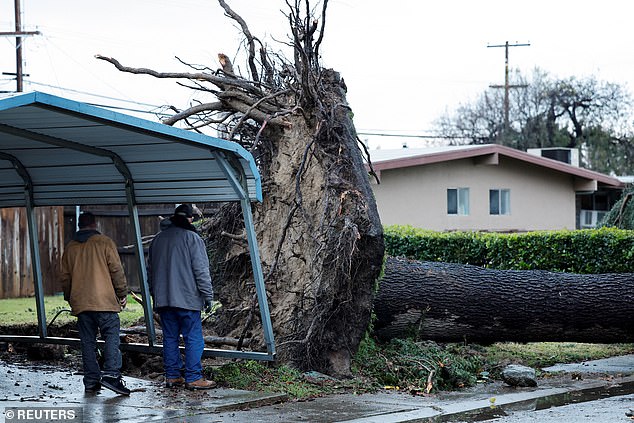

There are currently 461,960 people without power as California reels from the aftermath of the torrent.
Forecasters warned that northern and central California were still in the path of a “relentless parade of cyclones” on Sunday, promising little relief for the region.
An atmospheric river of dense moisture in the sky will move into central California today, but new storms will bring more torrents to northern California this week.
In the Los Angeles area, light rain was forecast through the weekend and stormy conditions were expected to return Monday with the potential for up to 8 inches of rain in the foothills.
Two overlapping events, a huge airflow of dense ocean moisture called an atmospheric river and a large hurricane-force low-pressure system known as a bomb cyclone, have caused devastating flooding and record snowfall over the past week.
The latest storms are said to illustrate the consequences of warmer sea and air temperatures caused by climate change, according to forecasters.
At least six people have died from weather-related incidents in California since New Year’s weekend, including a young child killed by a fallen redwood tree that crushed a mobile home in Northern California.
Since Dec. 26, San Francisco has received more than 10 inches of rain, while Mammoth Mountain, a popular ski area in the Eastern Sierra, has received nearly 10 feet of snow, the National Weather Service reported.


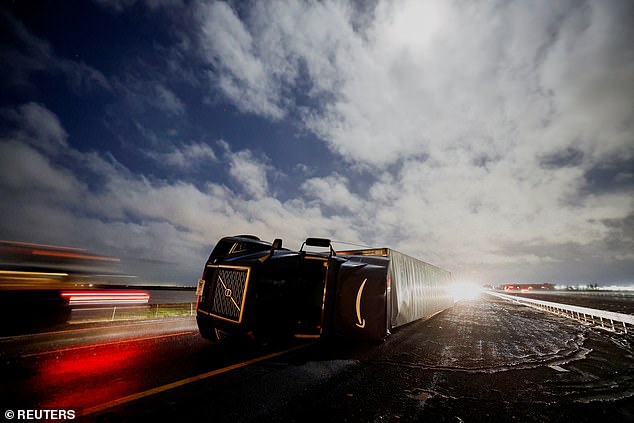

In the Los Angeles area, light rain was forecast through the weekend and stormy conditions are expected to return Monday with the possibility of up to 8 inches of rain in the foothills.
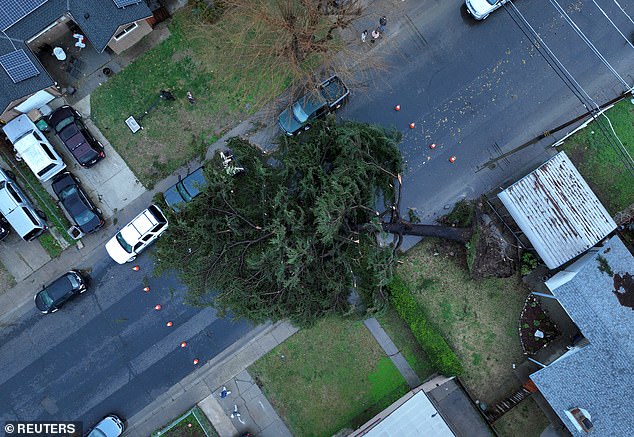

A drone view of a tree that fell during a winter storm with high winds in West Sacramento
And the city had its wettest 10-day period on record since 1871 with more than a foot of rain since December 1. Between 4 and 6 inches of rain is expected to fall in the next few days.
“Snow totals appear to be 1 to 2 feet with some of the higher elevations seeing 3 feet or more, creating significant travel impacts,” the weather service office in Sacramento said in connection with the next batch of snow. storms.
Flooding is expected to be a widespread concern due to the multiple atmospheric riverine events and record rainfall that have already been seen in the state.
More than 15 million people in California are under a flood watch this weekend, and there is a slight to moderate risk of excessive rainfall across much of northern and central California, increasing to a more widespread moderate risk by Monday.
All the storms won’t be enough to officially end California’s current drought, but they are helping.
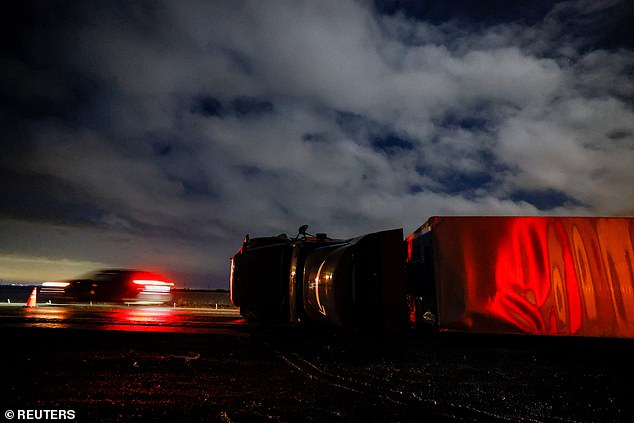

A semi trailer lies on its side after it was blown over by high winds during a winter storm along Interstate 5 in Woodland, California.
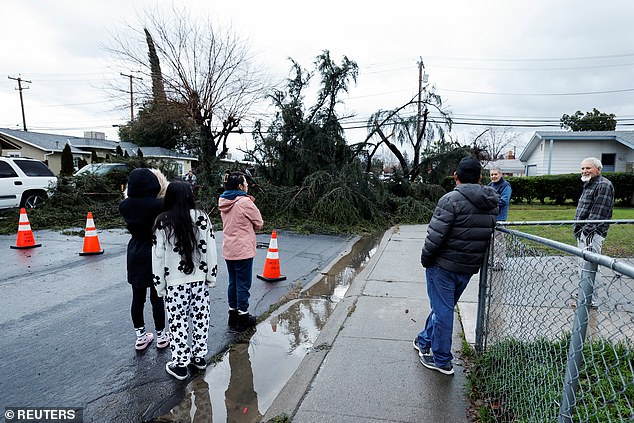

Residents look at a tree that fell in high winds during a winter storm in West Sacramento, California
“We expect an even stronger storm to impact the state Sunday night through Tuesday than we’ll see early this weekend,” meteorologist Matt Solum told CNN. “We encourage everyone to take time over the weekend to make the necessary preparations for the next storm ahead.”
‘Additional rain on already saturated soils will contribute to additional flooding concerns across much of the state. There will also continue to be an increased risk of rock slides and mudslides across much of the state,” Solum added.
In the past week, severe weather has generated violent gusts of wind that have toppled trucks, flooded the streets of small towns along the northern California coast and triggered storm surges that destroyed a pier in the coastal city of Santa Cruz.
Heavy rain and snow have already caused significant flooding and ground saturation, which means the next storm early this week will bring an additional flood threat, the NWS said.
Five feet of snow could fall in the Sierra Nevada mountains by Tuesday.
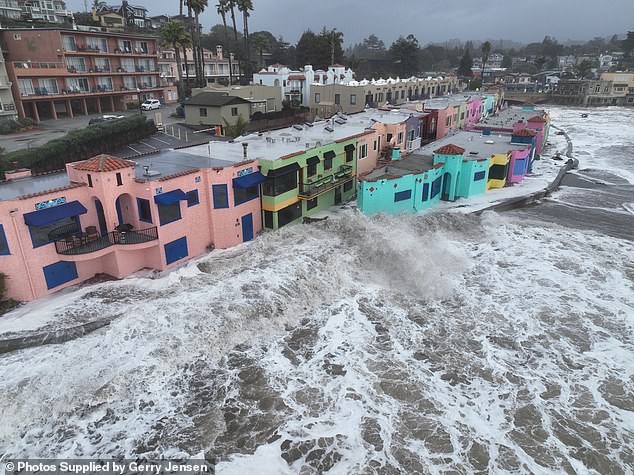

Drone photos provided by Gerry Jensen show the aftermath of a bomb cyclone that struck Santa Cruz, California earlier this week on January 4.
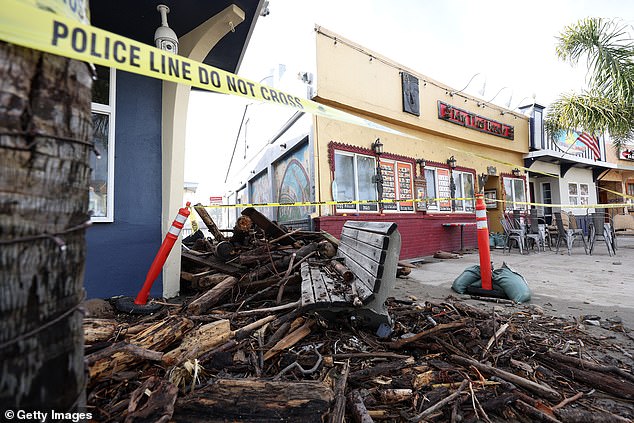

Debris is seen piled up in front of a restaurant after a massive storm hit the area on January 6 in Capitola, California.
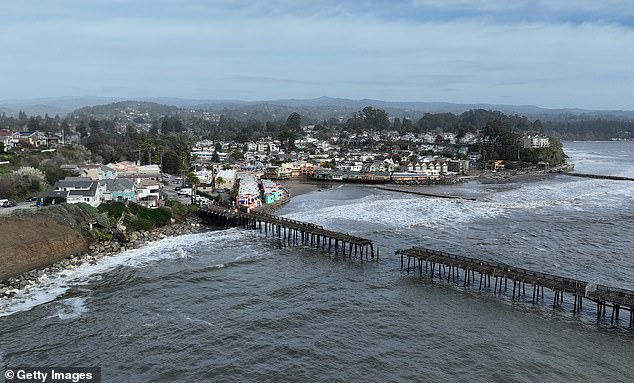

Damage is visible to the Capitola Pier after a powerful winter storm with part of the pier appearing to have broken
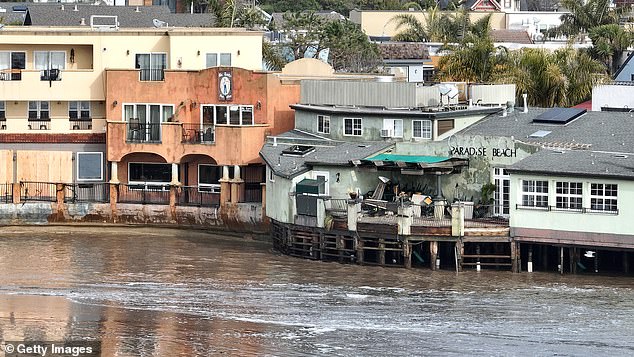

Damage from a powerful storm is visible in Capitola, California
